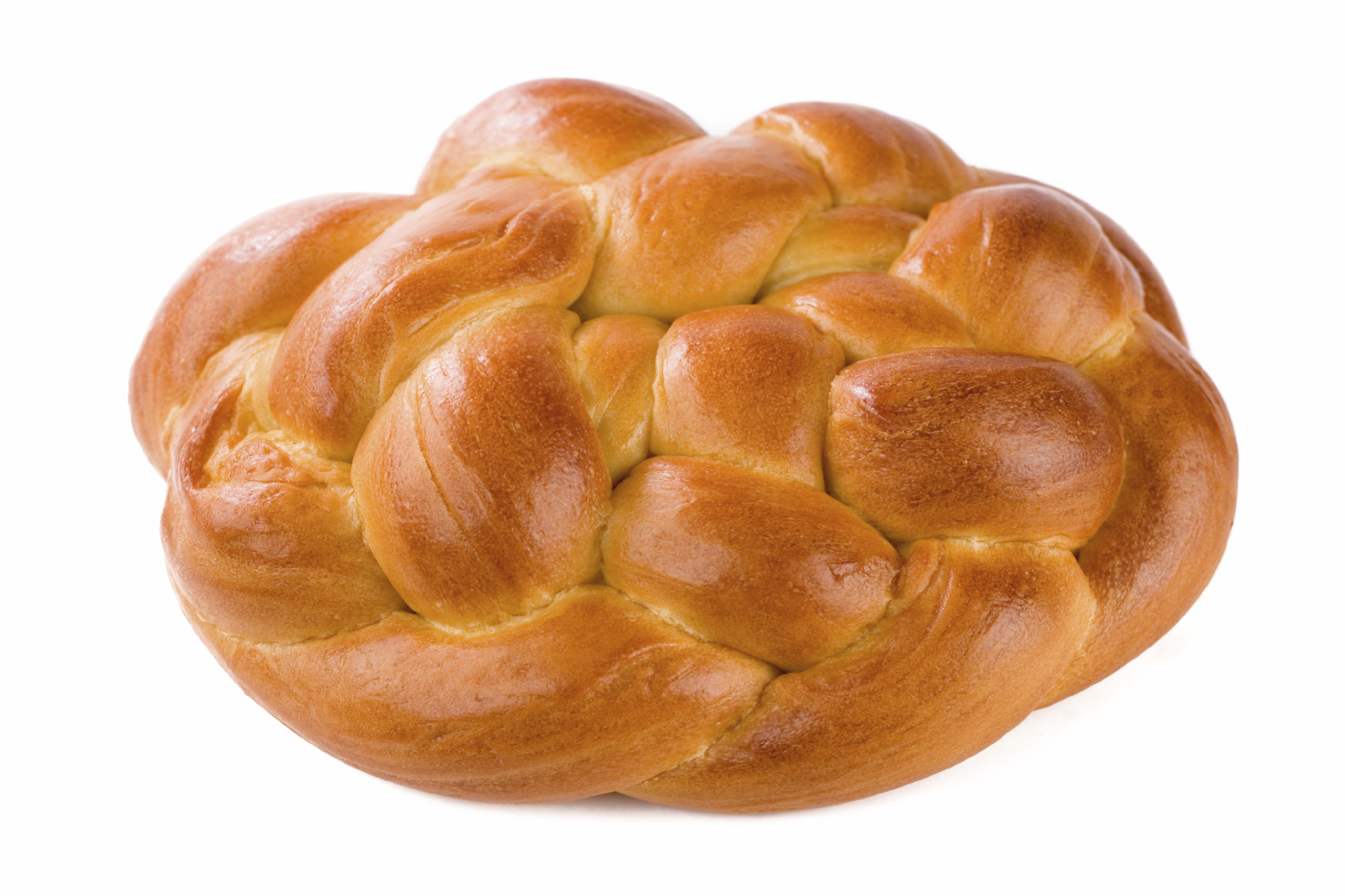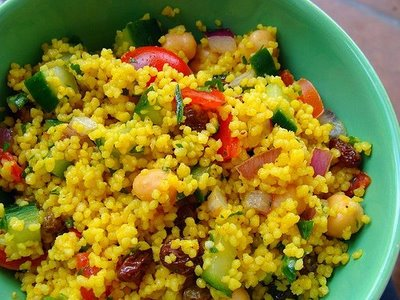 The abundant fruits and vegetables available for Rosh Hashanah, the meals before and after the Yom Kippur fast, and for Sukkot provide not only healthy nourishment, but also the expression (through their symbolic significance) of our hopes and prayers for the year ahead. The dishes that follow all contain symbolic foods and would be appropriate for the above-mentioned holiday meals. Remember to consider using less salt before the Yom Kippur fast and to choose make-ahead options to serve for breaking the fast and meals in the sukkah.
The abundant fruits and vegetables available for Rosh Hashanah, the meals before and after the Yom Kippur fast, and for Sukkot provide not only healthy nourishment, but also the expression (through their symbolic significance) of our hopes and prayers for the year ahead. The dishes that follow all contain symbolic foods and would be appropriate for the above-mentioned holiday meals. Remember to consider using less salt before the Yom Kippur fast and to choose make-ahead options to serve for breaking the fast and meals in the sukkah.
Many of the special holiday foods are mentioned in the Gemora and are related to prayers that begin "Yehi Ratzon…", "May it be Your will…" asking G-d to ordain certain conditions.
Most of us buy or make a round challah to serve for the High Holidays. The special shape symbolizes our hopes for the completion of another unbroken yearly cycle of life. The apple-date spread is delicious to serve with challah at any holiday meal. The dates, "tamri", are a reminder of a similar-sounding word which means finished or consumed; in this case it is our enemies we wish to be finished.
Beets, "silka" are related to the word "siluk" (removal), and eating them invokes removal of spiritual roadblocks or adversaries for a sweet year ahead. Of course, the sweetness of beets alone is suggestive. Serve the beet hummus with pita chips for a break-the-fast buffet, or with raw veggies for dipping as an appetizer in the sukkah.
Other foods mentioned in the Gemora are gourds, fenugreek (an herb with culinary and medicinal uses), leeks and cabbage. Many other foods are consumed for the sweetness they offer—literally and symbolically.
The couscous salad, with its abundant plumped tiny pasta morsels, is a reminder of our hopes for prosperity and plenty in the year ahead. This is another dish appropriate for both breaking the fast and for Sukkot. You have a lot of options for what to include in this delicious dish. If you want to follow the North African Jews' tradition of avoiding black foods (which connote mourning), use golden raisins instead of currants or dark raisins.
As an article by Rivka C. Berman on the Mazornet.com website reminds us, "Eating the good-omen foods is just a little reminder hinting God of our desire and hopes for a happy and blessed new year." That is to say, eating these foods won't assure us the fulfillment of our wishes; only our deeds can help in achieving such ends!
APPLE-DATE SPREAD FOR YOM TOV CHALLAH
1/2 lb butter or parve margarine, softened
1/2 C finely chopped or grated apple
1 TBSP lemon juice
1/2 C chopped dates
1/4 tsp cinnamon
2 TBSP brown sugar
Pulse all ingredients together in a food processor with the chopping blade. Store in the refrigerator. Makes about 1 1/2 cups.
BEET HUMMUS
I discovered beet hummus in a French cooking magazine and was enticed by the photo of the intensely pink mixture displayed with the recipe. This is my own version. You can increase the garlic to one big clove if you like the flavor (and if you're sure your guests will share that preference). This keeps very well and even freezes with no loss of flavor or texture. Remember that our digestive systems do not always absorb all traces of the red color of beets, sometimes resulting in startling though innocuous results the day after consumption!
9 oz topless beets, scrubbed, cooked and cubed*
2 TBSP tahina (sesame seed paste), or more to taste
5 TBSP lemon juice
1 small clove of garlic
1 TBSP ground cumin
grated peel of two lemons
generous pinches of sea salt or Kosher salt
lots of pepper
*Cook them at 375 degrees in a covered dish with about ¼ in. of water until a knife penetrates easily. Peel when cool. Wear rubber gloves when handling the beets.
Place all in blender and mix until smooth, starting with low speed and increasing to high as ingredients get incorporated. You may have to stop, take off the lid and push the contents down so that they can be puréed by the blades when you restart the blender. Taste and adjust flavors as desired. Chill and store in the refrigerator for up to three days or freeze for real do-ahead convenience.
COUSCOUS SALAD
This is a very versatile salad for any season. You can make it ahead, serve it as almost a whole meal in itself. It's great for a picnic, and leftovers are just as delicious the next day. The amounts given are for 2 generous whole-meal servings, so just double or triple everything when you have more people.
Couscous:
2/3 C broth (vegetable or chicken)
1 TBSP extra virgin olive oil
2/3 C whole wheat couscous (or plain if you prefer)
1/2 tsp kosher salt
Dressing:
1 1/2 tsp fresh-squeezed lemon juice
1 1/2 tsp red wine vinegar
1/2 tsp kosher salt
fresh-ground pepper to taste
1/2 tsp Dijon mustard
2 TBSP extra virgin olive oil
Salad:
2 TBSP dried currants or raisins, plumped in 1/3 C broth and drained (save
broth in a covered container in the fridge)
8 to 10 oz. cooked chicken cut into pieces
OR two – 5 or 6-oz cans tuna in oil, drained
1/4 C finely chopped sweet red onion OR scallions OR 3 TBSP shallots
1/2 small zucchini, diced (use different colors if using more than 1 squash)
1/4 C diced celery
6 small cherry tomatoes (various colors), quartered
1/4 C cooked corn kernels (microwave an ear for 2 min. in its husk)
1/4 C toasted slivered almonds
2 TBSP chopped flat-leaf parsley
1 1/2 TBSP ground cumin
1 TBSP ground coriander
Prepare couscous: Bring the 2/3 C broth and the oil to a boil in a small saucepan. Remove from heat and add the salt and the couscous, stirring to moisten the couscous evenly. Cover and set aside for at least 5 minutes. Remove cover, fluff with a fork and allow couscous to cool in the pan while rest of salad is prepared. If you are making a lot, spread it out on a large platter or tray for quicker cooling.
Make dressing: In a large bowl, whisk lemon juice and vinegar with the salt and pepper until salt dissolves; whisk in the mustard, then slowly add the olive oil until all is well blended. Pour into a small cup or bowl and set aside.
Assemble the salad: In the bowl from the dressing place the currants, chicken or tuna, onion, zucchini, celery, tomatoes, corn, almonds and parsley. Toss gently. Sprinkle with the cumin and coriander and toss again. Drizzle with about two-thirds of the prepared dressing and mix gently. Add cooled couscous, drizzle with the remaining dressing and toss together. Taste to see if you want to add more of the seasonings.
Cover and chill the salad in the refrigerator for at least an hour. If it seems dry when you are ready to serve it, add a little of the reserved broth.
NOTE: Some other possible additions or substitutions for this salad: canned chickpeas (drain and rinse), dried cranberries (maybe with turkey cubes or chicken), chopped fennel bulb, crumbled feta, cilantro, cinnamon, diced preserved lemon, bell pepper in various colors in 1/4" dice.
